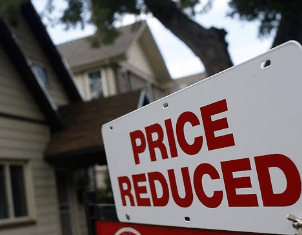
RP Data has released its June wrap of the Australian housing market (video below) which, as always, makes for some good viewing. The video covers housing market conditions and prices as at end-May 2012, where dwelling values fell by -1.4% over the month, which was the worst result since 2008 at the height of the GFC.
A summary of price results and declines from peak are provided in the below table:
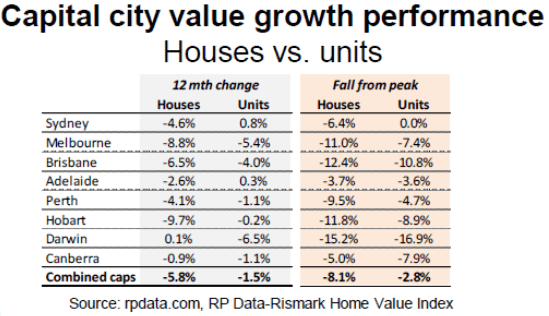
As you can see, four capital city markets – Melbourne, Brisbane, Hobart and Darwin – have now experienced house price falls of over -10%, with Perth (-9.5%) also down sharply. At the national capital city level, house prices have declined -8.1% since peak (all dwellings -7.4%), supported by below average falls in Sydney (-6.4%), Adelaide (-3.7%) and Canberra (-5.0%).
As you can gather from the above table, unit prices have shown far more resilience that houses, which is also reflected in the below chart:
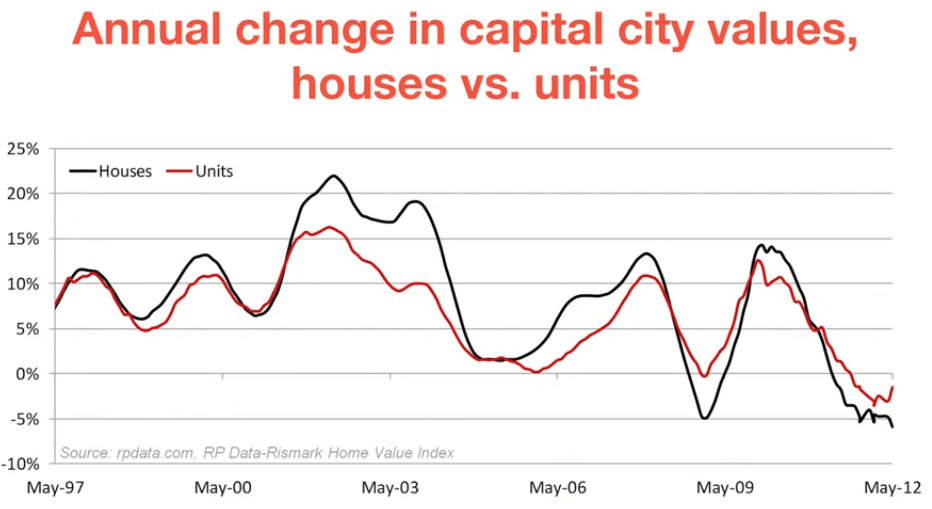
According to RP Data, selling metrics have improved marginally, with both selling times and the level of vendor discounting falling in recent months:
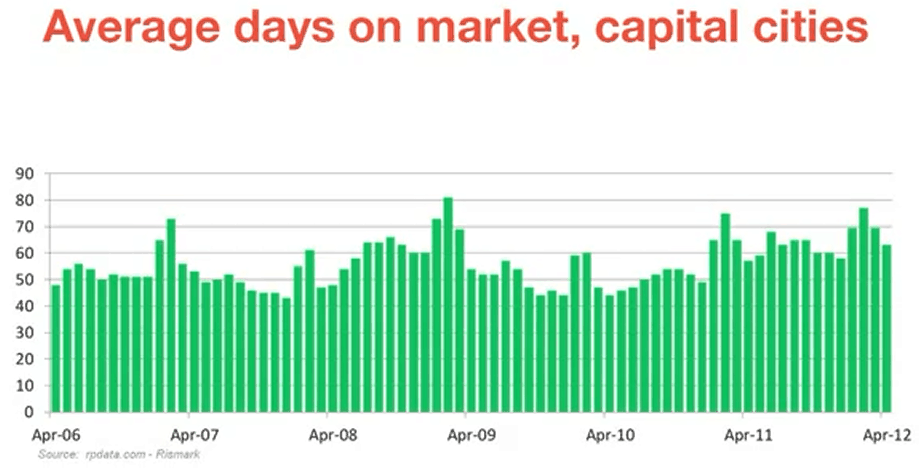
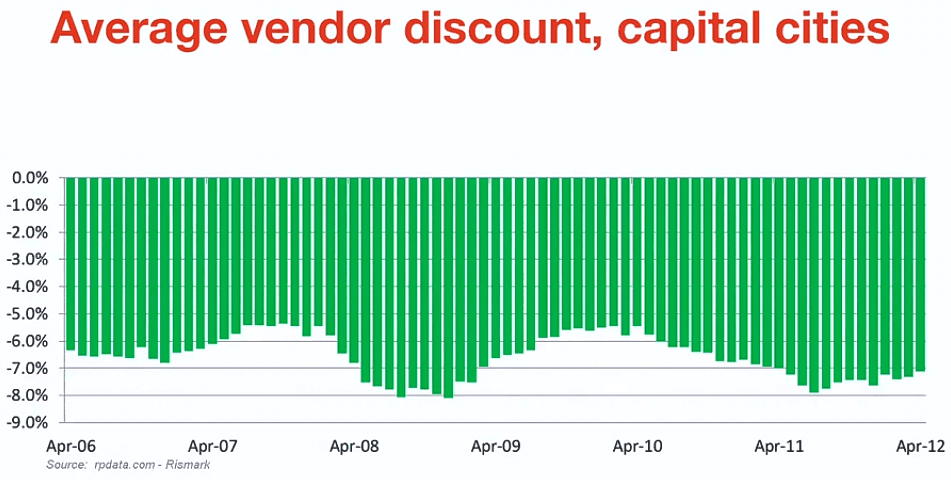
That said, RP Data believes that it’s still a “buyers market”, with these metrics still tracking unfavourably relative to “normal levels”. Moreover, the number of homes for sale are still near record levels, although they have likely peaked:
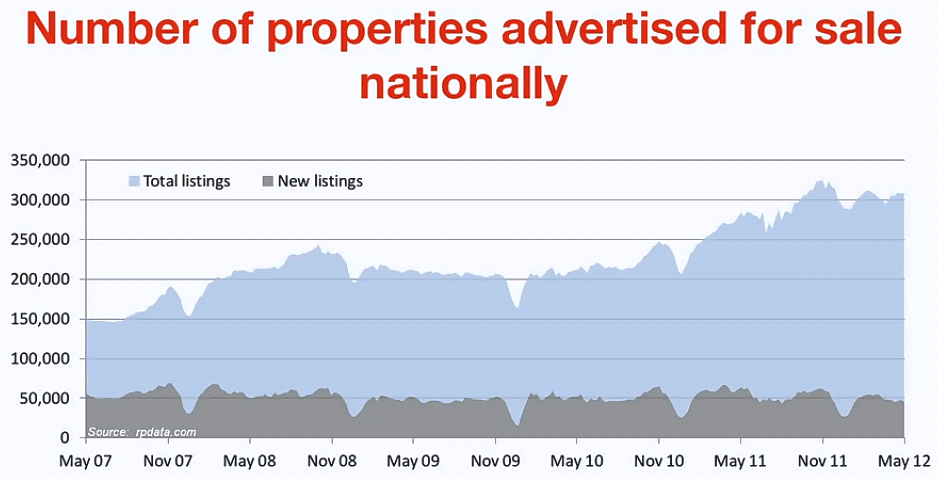
There is a large divergence between capital cities, however, with Australia’s largest market – Sydney – proving to be relatively robust, with prices holding-up relatively well and rental returns exceeding the national average:
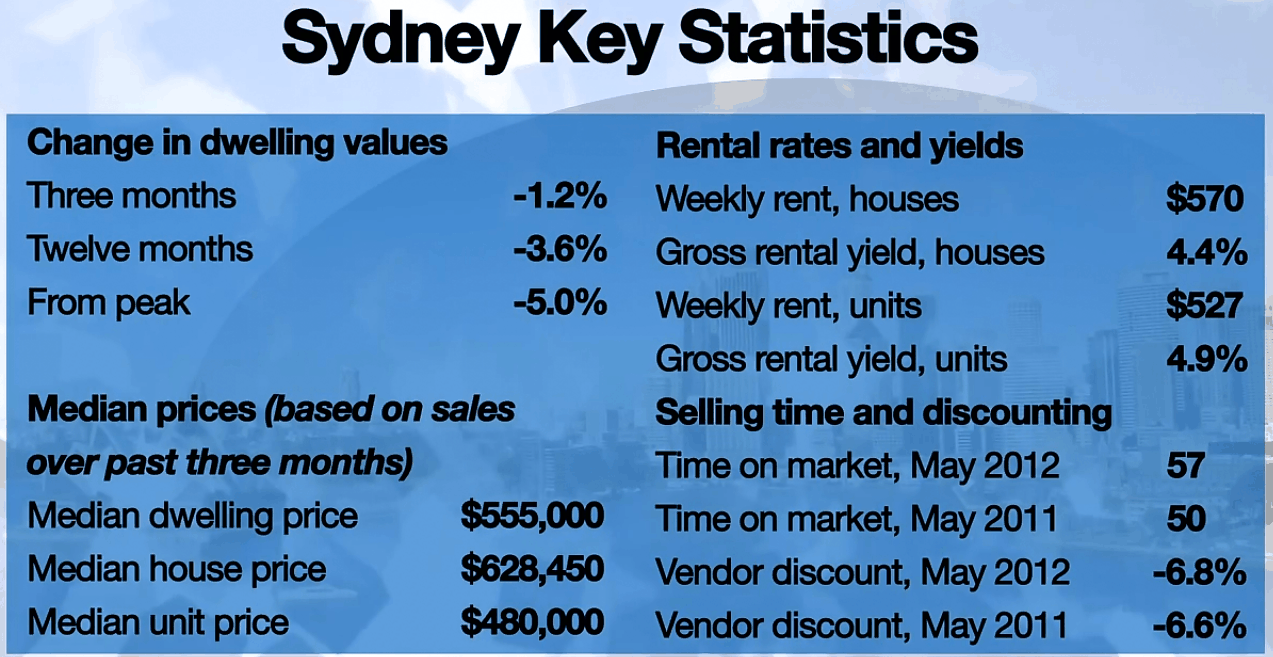
By contrast, Australia’s second biggest city – Melbourne – is in trouble. Not only are prices falling sharply, but rents have flatlined and yields are by far the lowest in the nation:
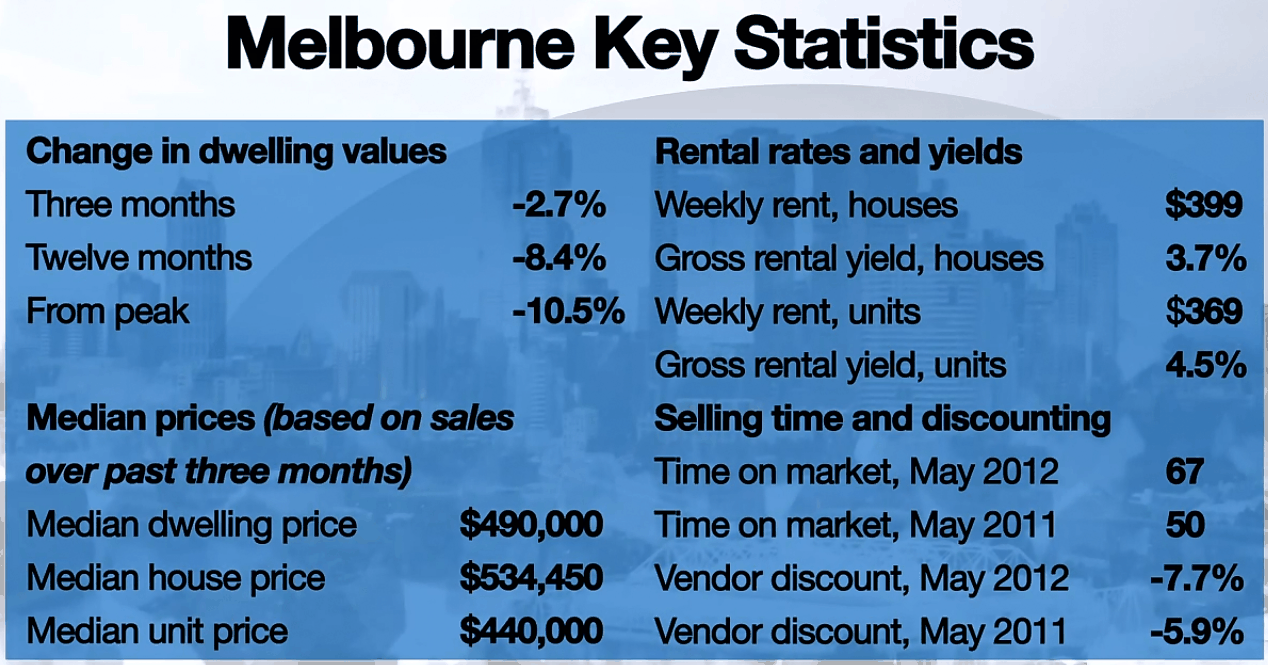
Of the major capitals, home prices in Brisbane have fallen most sharply, down over -12% since peak. However, prices appear to be stabilising and rental yields are now the best out of the mainland states:
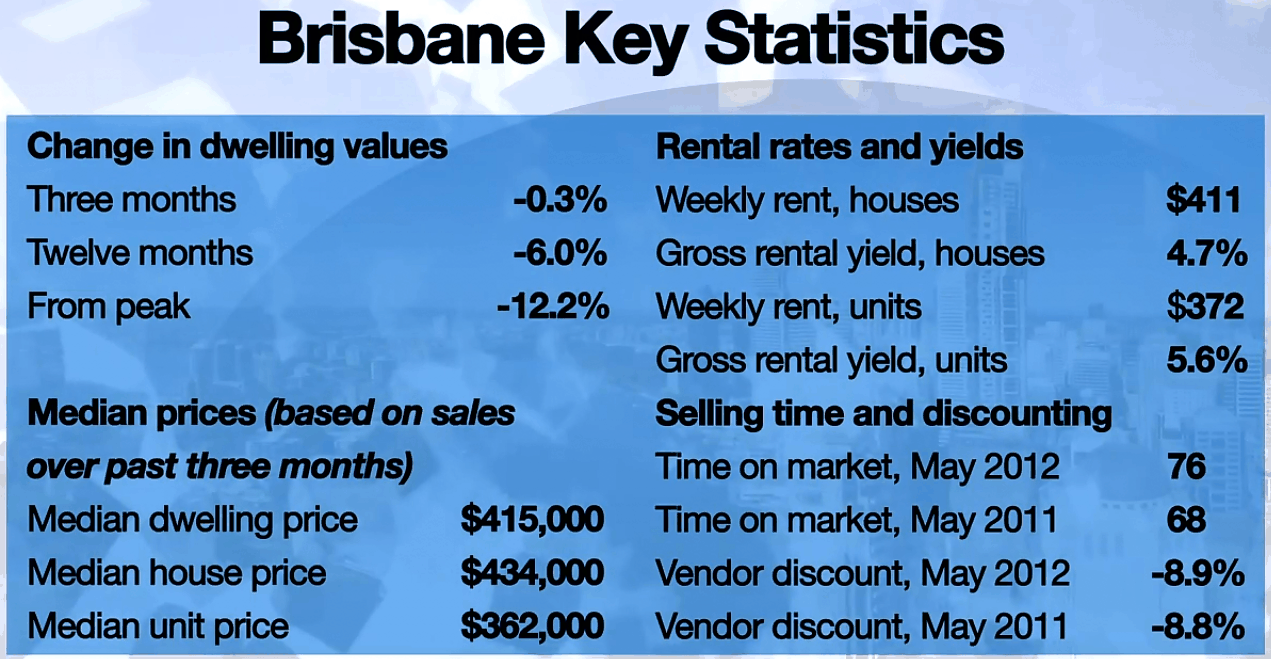
In Australia’s resource capital and fourth largest market – Perth – prices are still falling, although the rate of decline has moderated. However, the rental market is going gangbusters, up some 16% over the past year:
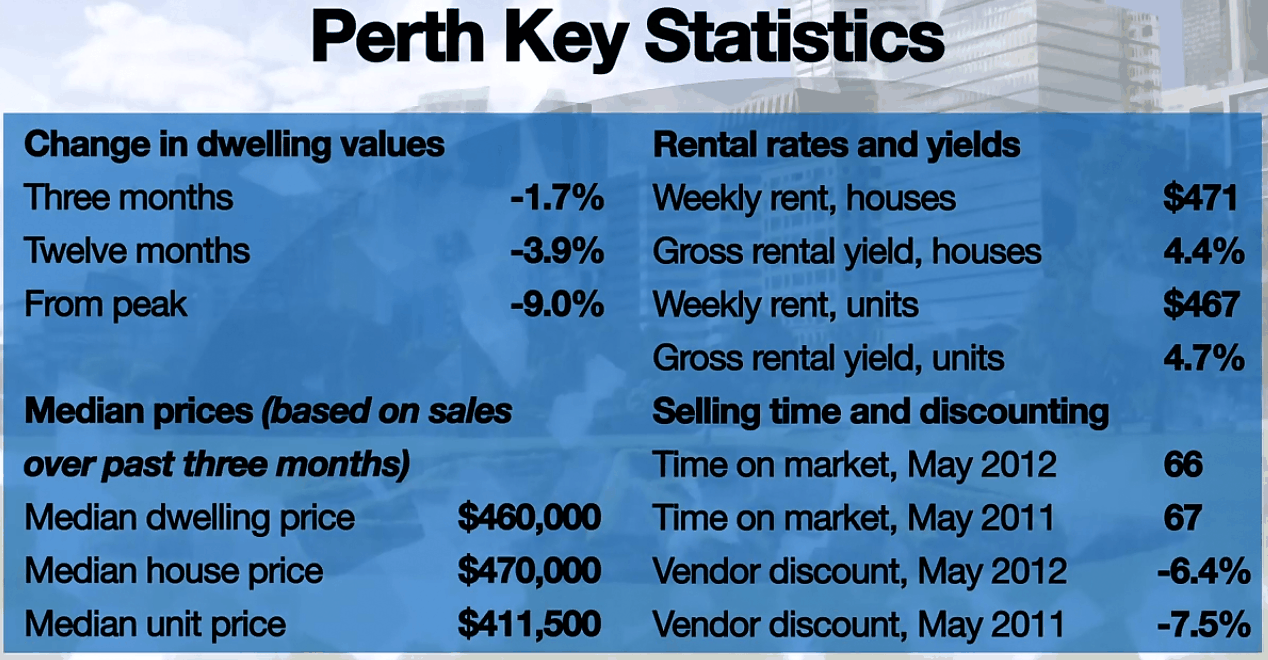
Conditions in Australia’s fifth largest state – Adelaide – are curious. Prices there have held-up better than anywhere in the nation driven largely by the premium end of the market:
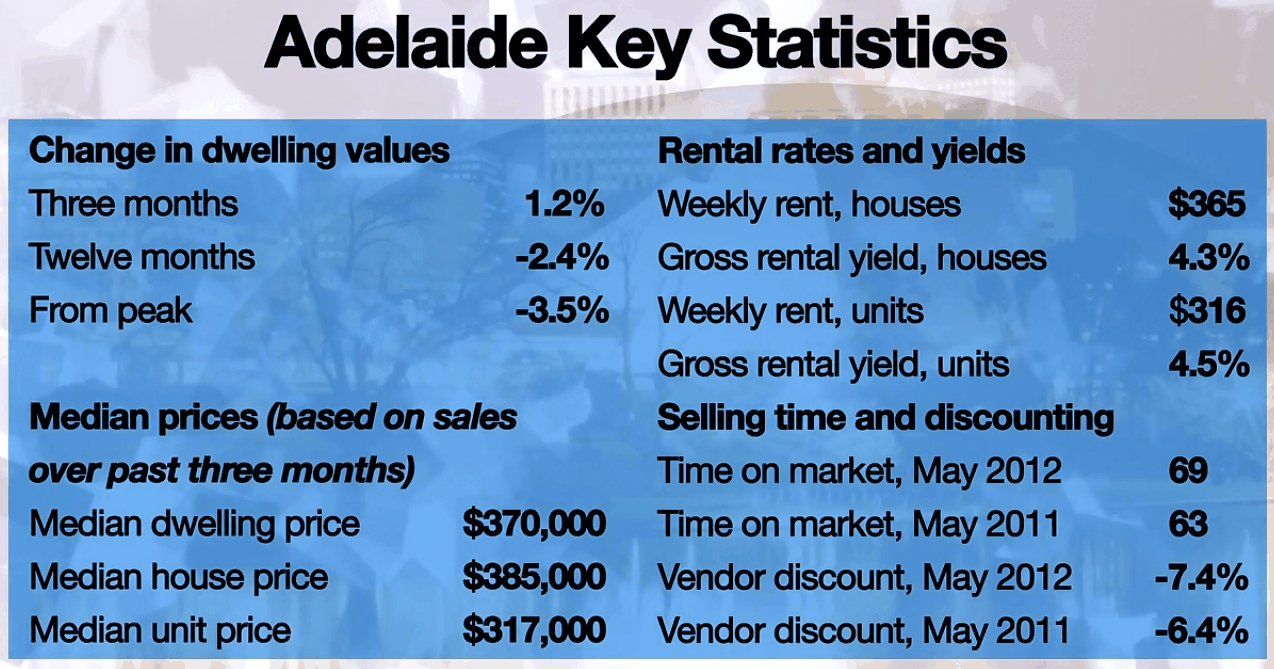
Finally, the smaller capital city markets of Hobart, Canberra and Darwin are a mixed bag. Prices in Canberra have held-up well, whereas they are off sharply since peak in the territories. Darwin’s prices, too,
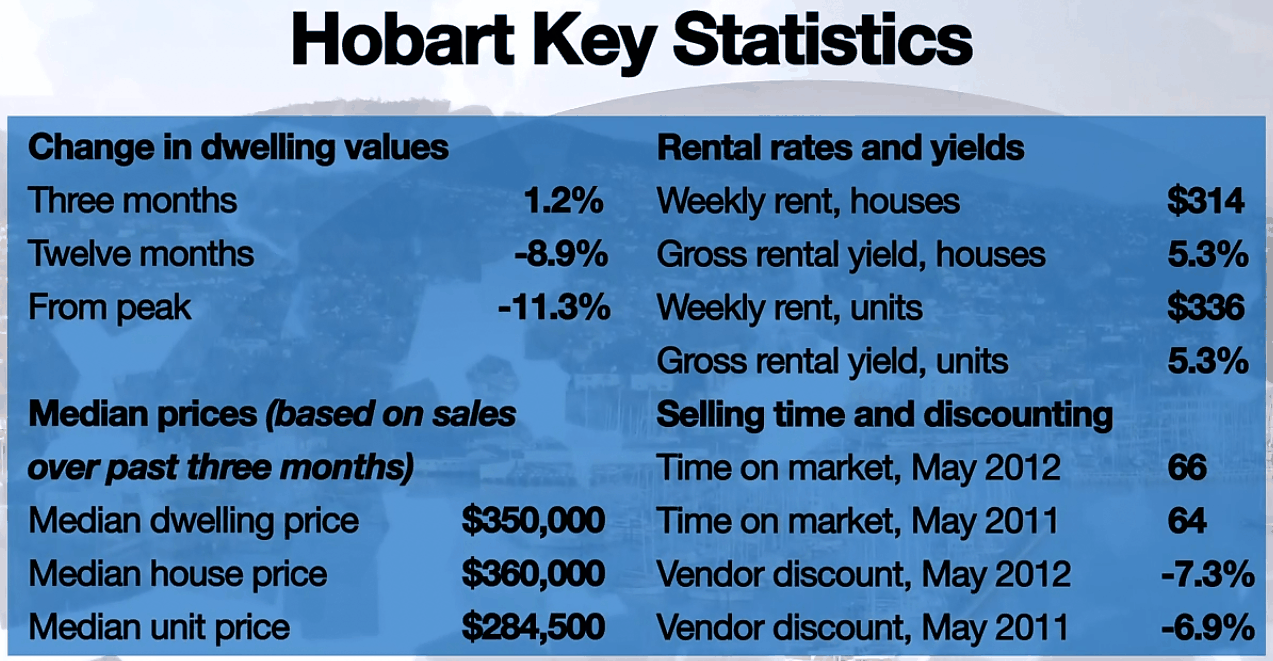
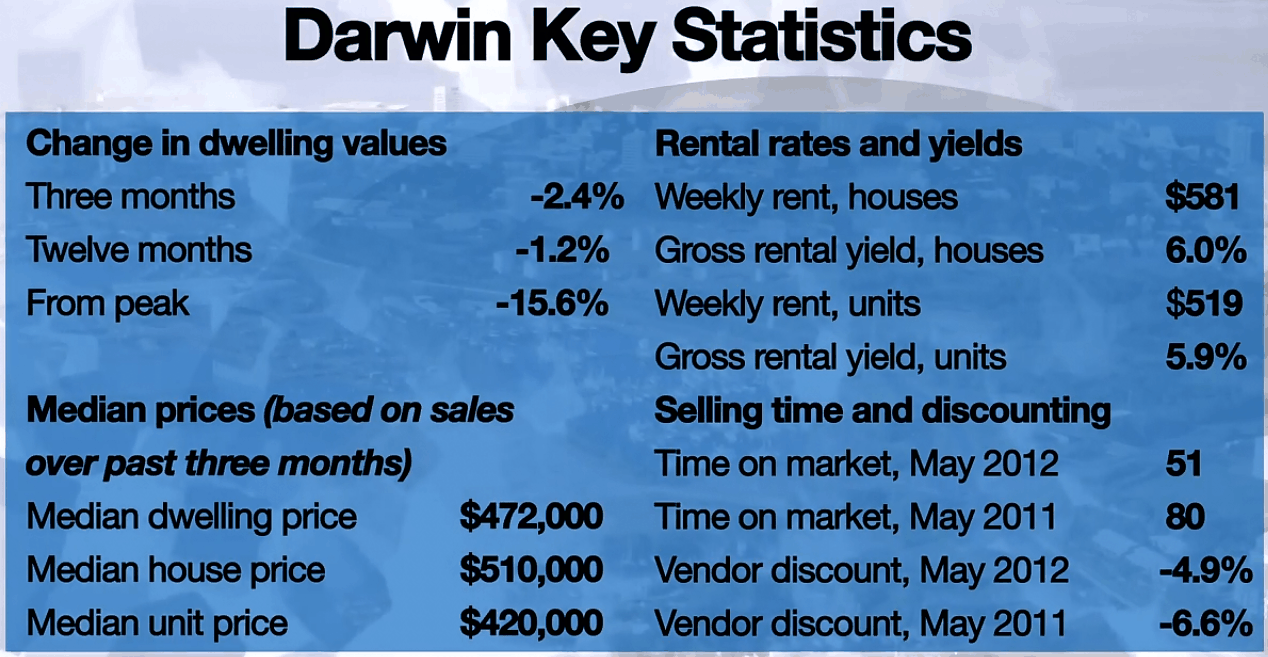
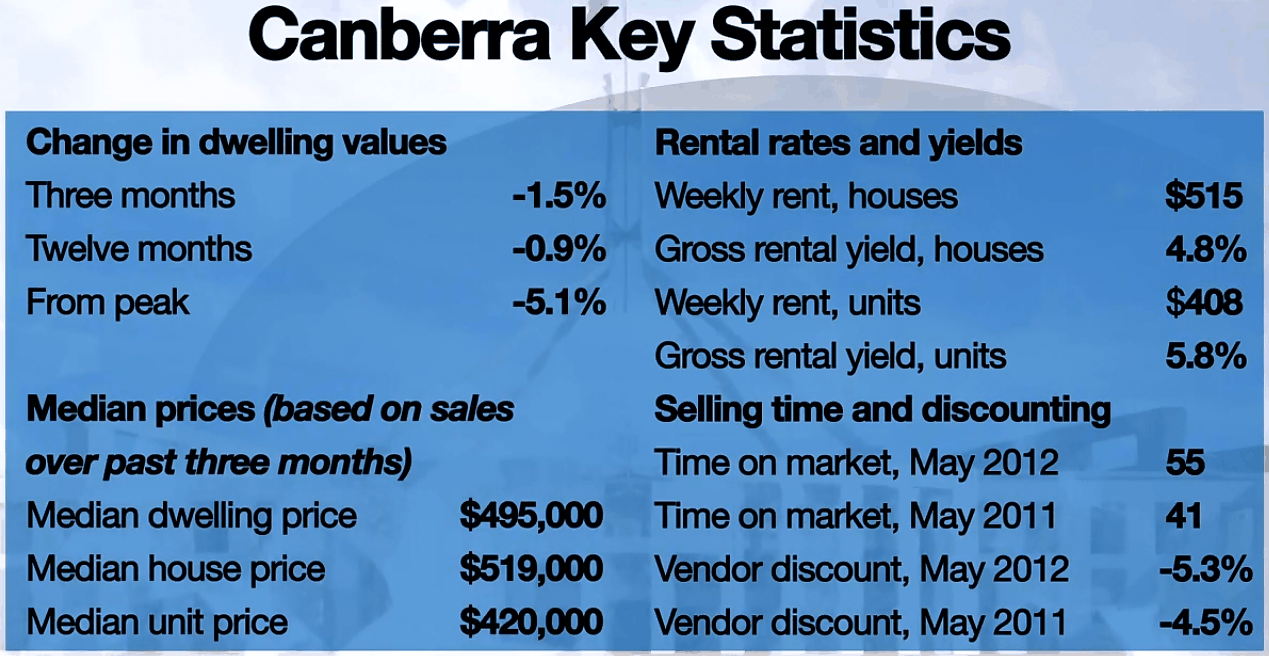
RP Data expects -100 basis points of monetary easing over the remainder of the year, which should provide some support to the market going forward, though such an easy campaign would only happen if things deteriorated from here.
They also note that vacant land sales are some -40% below average levels, however, lot prices have remained relatively stable and have actually risen on a price per square metre basis due to falling lot sizes.

